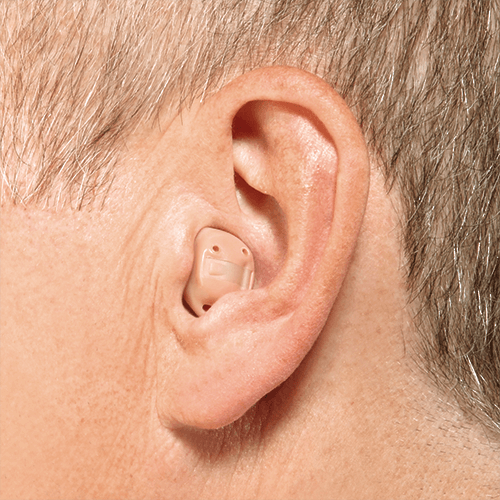Hearing Aids Overview
It doesn’t take more than a quick search to uncover that there are a lot of options for hearing aids on the market. At first, this can seem exciting, but we understand that it can also be a bit overwhelming. At our clinic, you can be rest assured that we will help you to make this decision, and we will consider your lifestyle, hearing profile, budget and style preferences when recommending hearing aids. Although we will be by your side, it is still important to first have a basic understanding of the different styles as well as the available features of today’s hearing aids before making a final purchase.
Hearing Aid Styles
When we use the term “styles” for hearing aids, we are discussing how the aid fits into and onto your ear. To simplify things, most manufacturers use the same three- or four-letter acronyms to categorize their hearing aid styles.

Behind-the-Ear (BTE)
Behind-the-ear, or BTE hearing aids are a very classic hearing aid shape. BTE hearing aids house their technology in a casing that sits behind the outer ear. A plastic tubing then fits over the outer ear and into the ear canal where it is attached to an earbud equipped with a microphone.

Receiver-in-Canal (RIC)
Receiver-in-canal, or RIC aids are very similar to their BTE counterparts. The key difference between these two is that instead of a plastic tubing connecting the outer part of the hearing aid to the ear bud, RIC styles use a very thin and discreet metal wire. Some manufacturers will refer to this style as receiver-in-the-ear or RITE; however, they are essentially the same. RIC hearing aids are one of the most popular styles for our patients.

In-the-Ear (ITE)
In-the-ear or ITE hearing aids, unlike BTE or RIC hearing aids, fit entirely within the outer ear. ITE hearing aids are custom molded to fit your unique ear shape, and will vary slightly on how much of the outer ear the hearing aid fills. There are half shell and full shell versions of ITE hearing aids. ITE hearing aids are also very common amongst the patients we see in our clinics.

Completely-in-Canal (CIC)
Completely-in-canal, or CIC hearing aids are also custom molded; however, instead of sitting in the visible part of your outer ear, CIC hearing aids fit completely within the ear canal. A small transparent handle is typically visible. This is used to insert and remove the hearing aid.

Invisible-in-Canal (IIC)
Invisible-in-canal or IIC hearing aids are the smallest style of them all. These tiny hearing aids fit so discreetly in the ear canal, that they are completely invisible for most wearers.
Hearing Aid Features

Speech Intelligibility
Most people choose to get hearing aids to better understand conversations with their loved ones. Manufacturers understand this, which is why most of them have created their own technology aimed at making conversations - often with multiple people and in noisy environments - much easier and more enjoyable.

Smart Connectivity
We live in a connected world. For some people, a hearing aid’s ability to connect to other devices such as a smartphone or smartTV will be very important. Some hearing aids can connect to all phones, whereby others can only stream directly from iPhones.

Tinnitus Relief
Many people with hearing loss also experience tinnitus - an annoying ringing or buzzing in one or both of the ears. Many hearing aids of today come equipped with special technology aimed at relieving tinnitus symptoms.

Smartphone Apps
Some hearing aids still employ buttons on the outer parts of the hearing aid in order for wearers to adjust settings, however, many now use smartphone applications. This helps hearing aids to be more intuitive and also helps wearers to “train” their hearing aids to automatically adjust to certain settings when in certain environments.

Feedback Cancellation
Most hearing aids of today no longer expose their wearers to annoying and piercing feedback noise. Modern hearing aids use advanced technology in order to detect and stop feedback noises before they even start.


